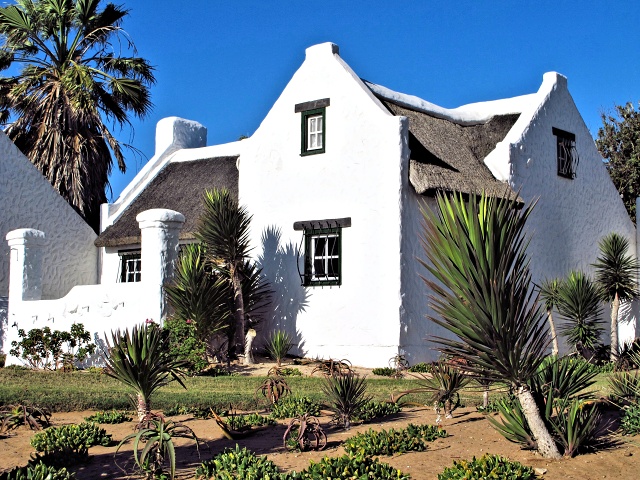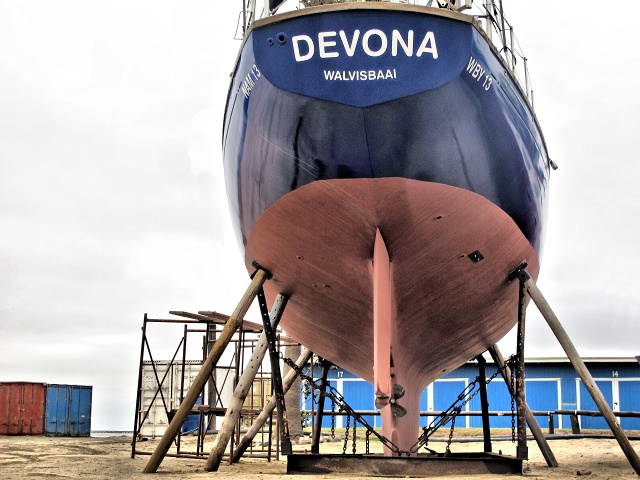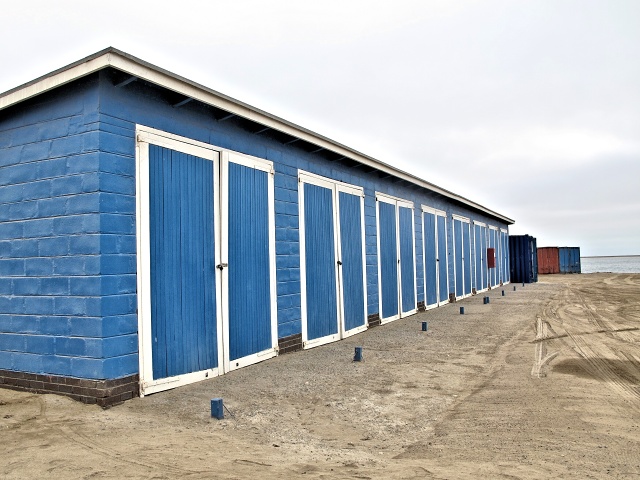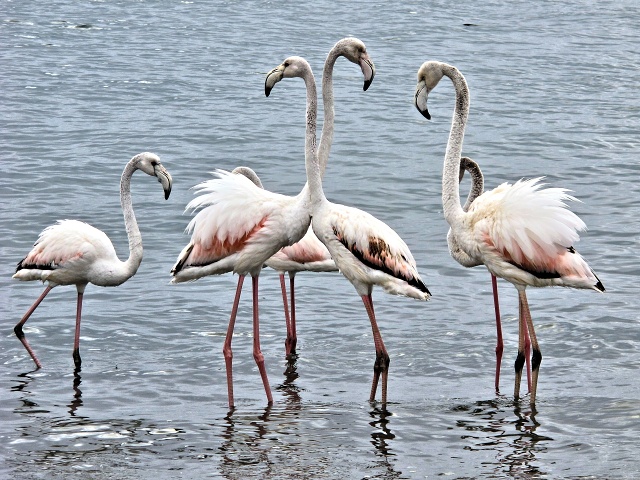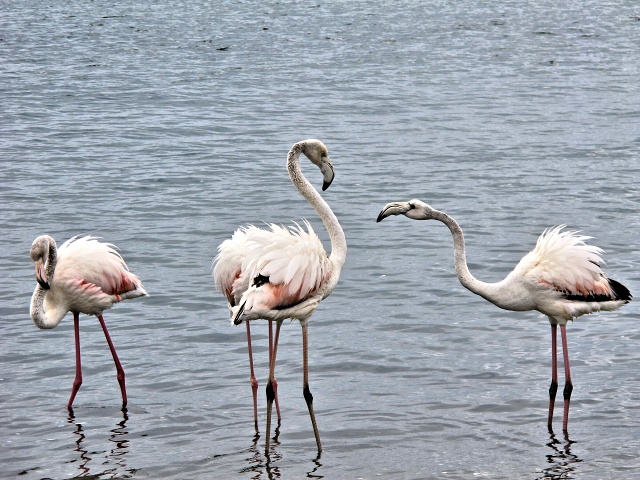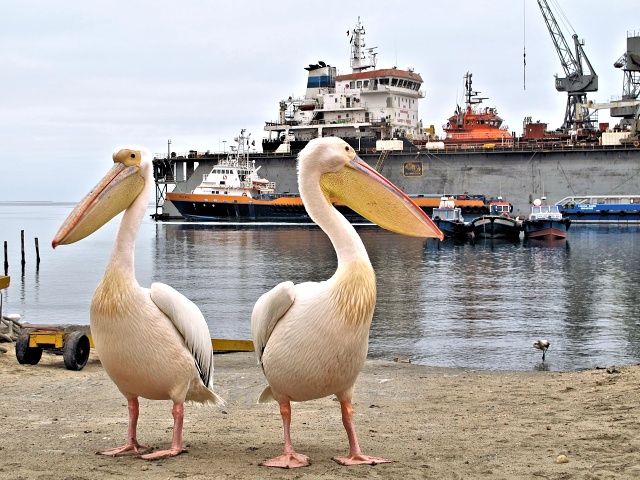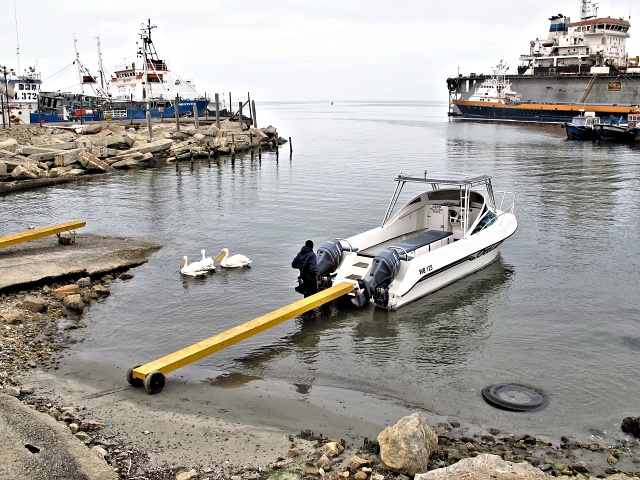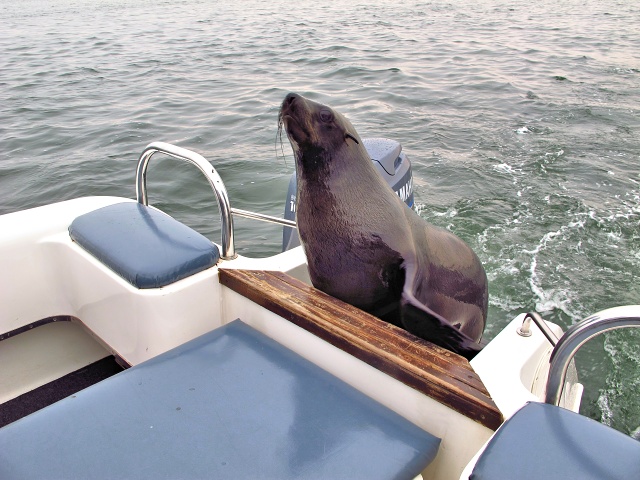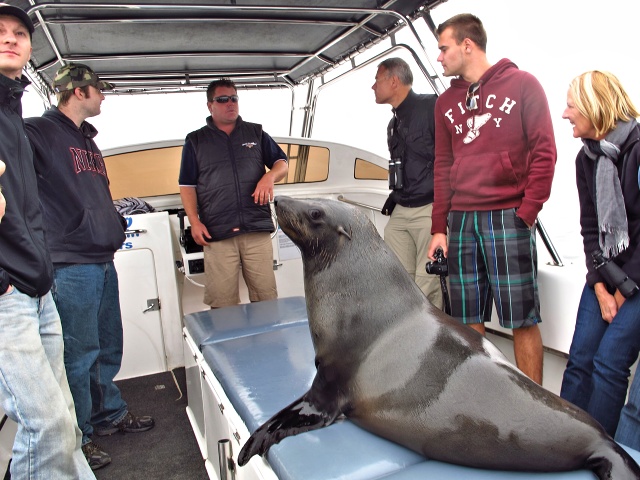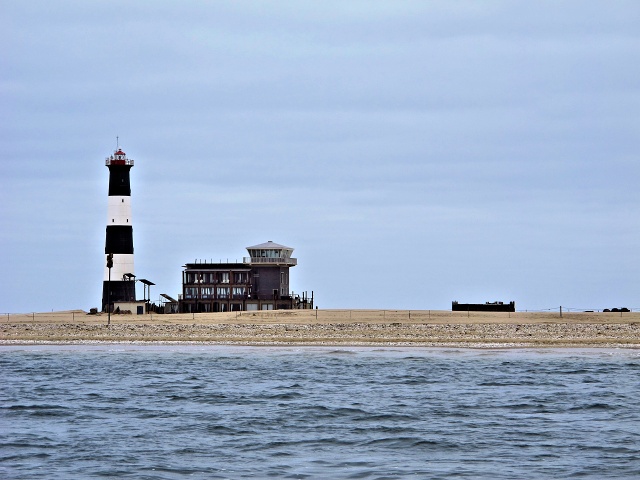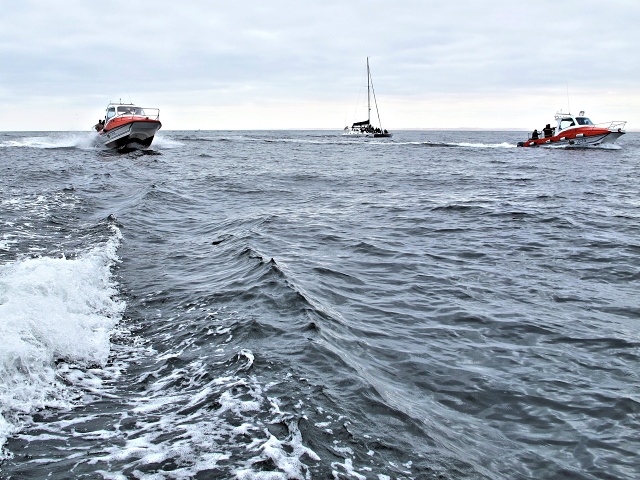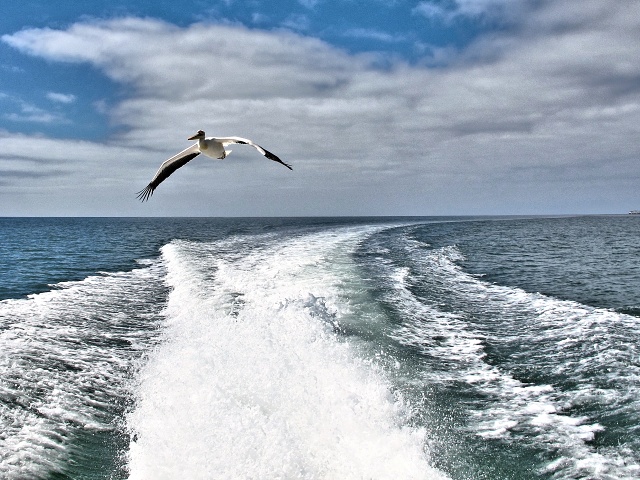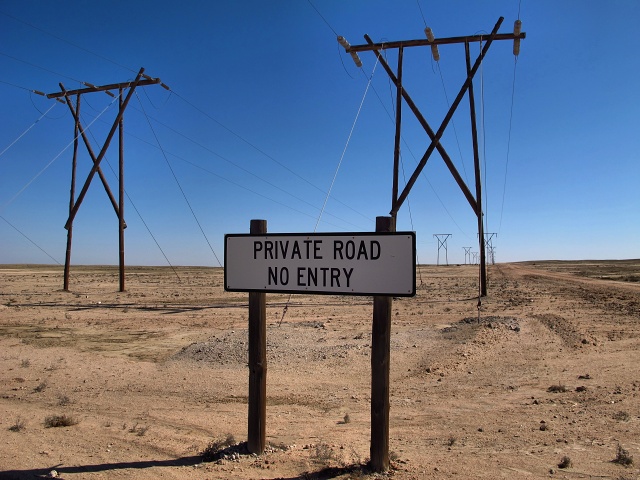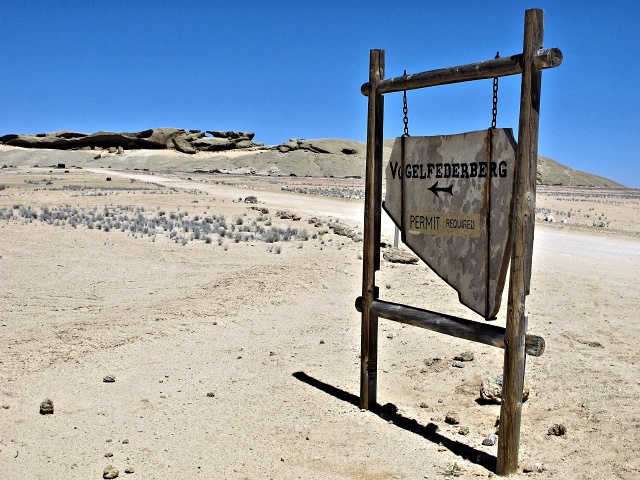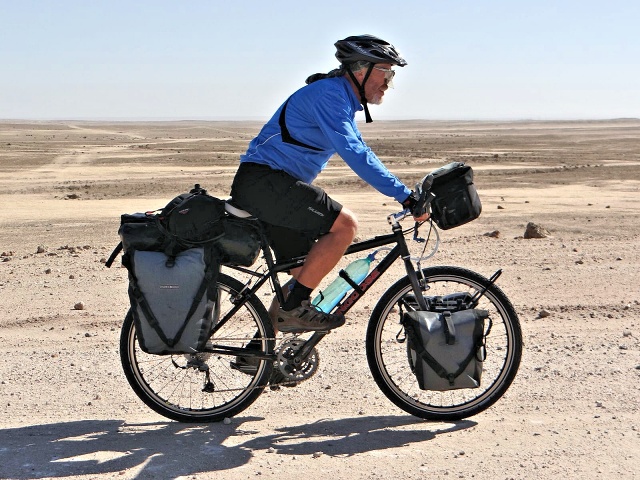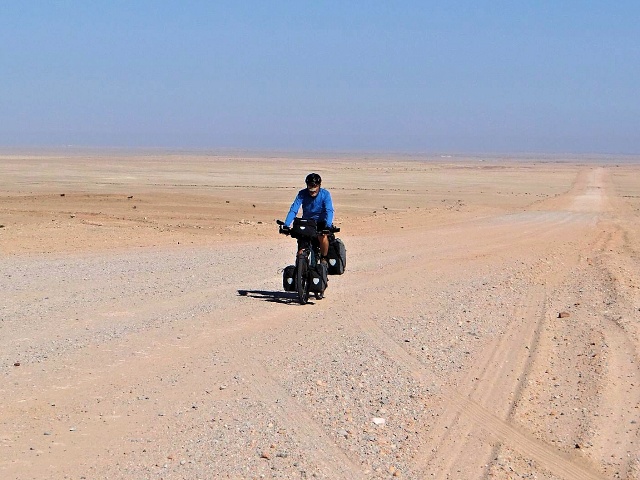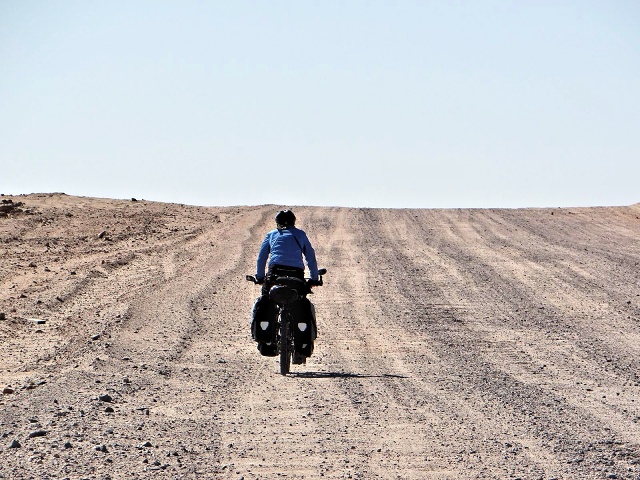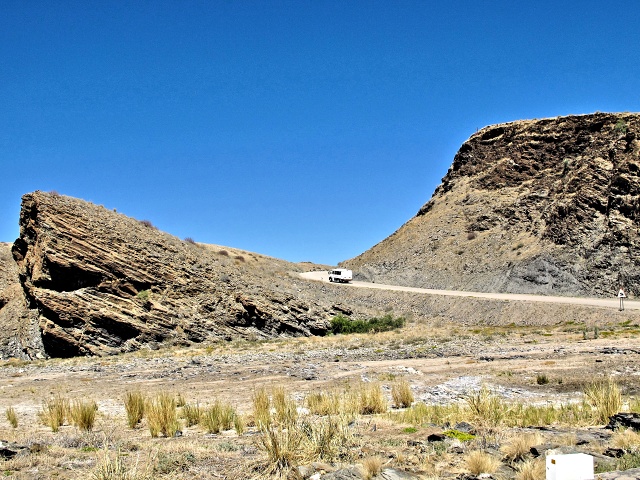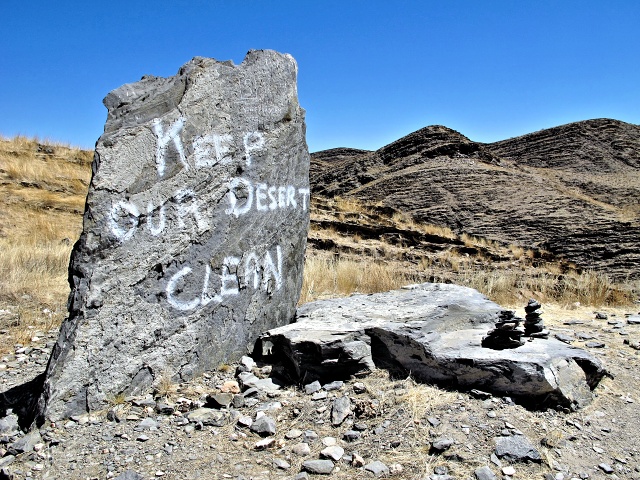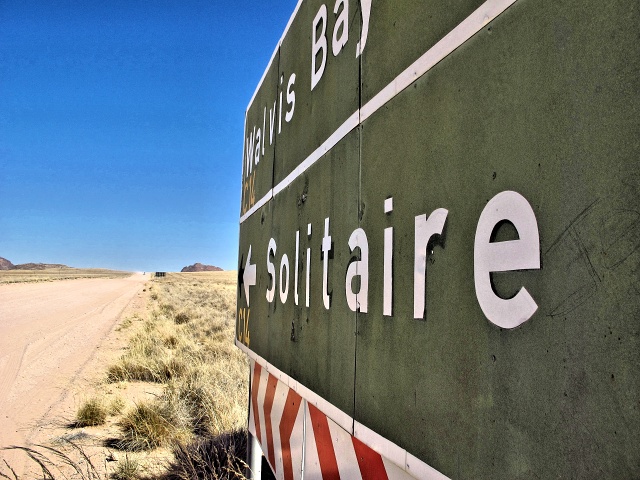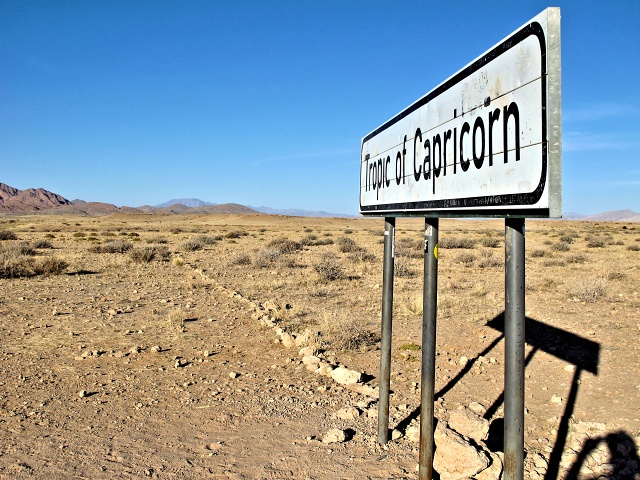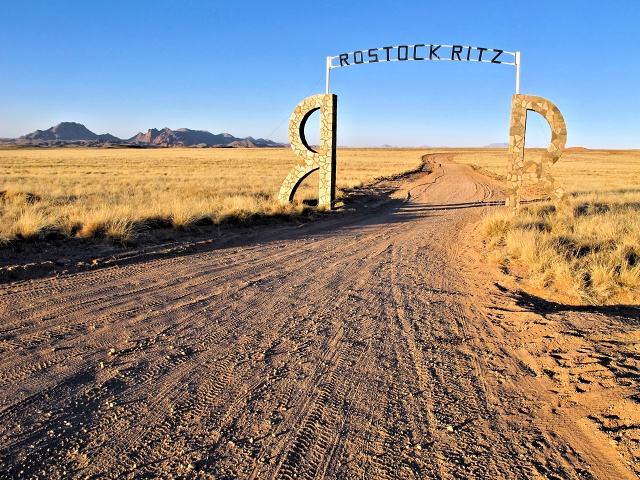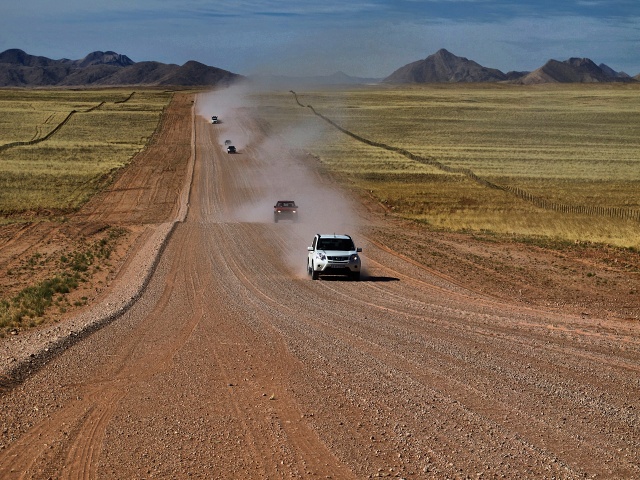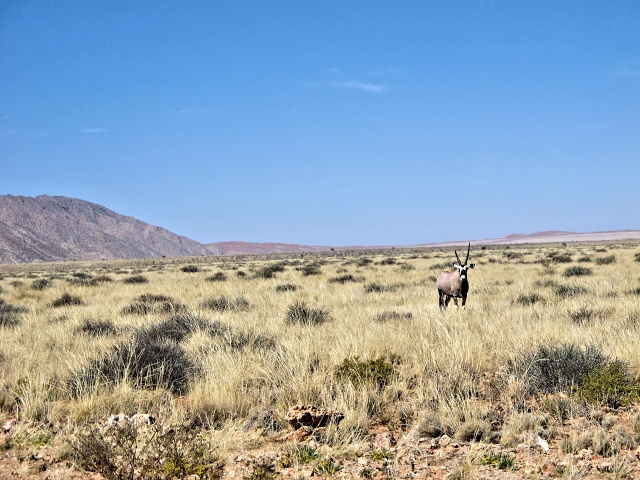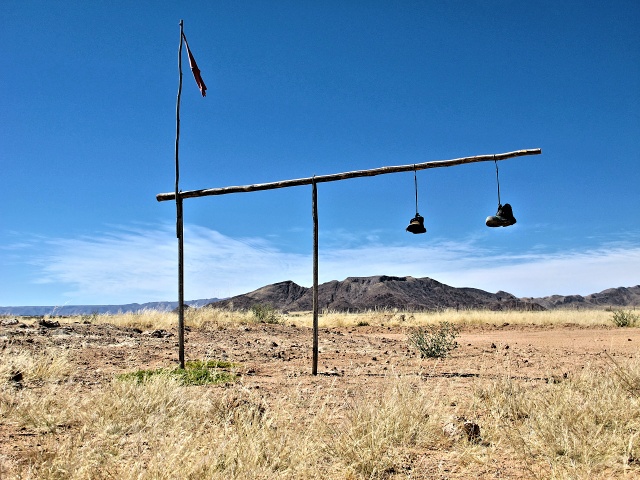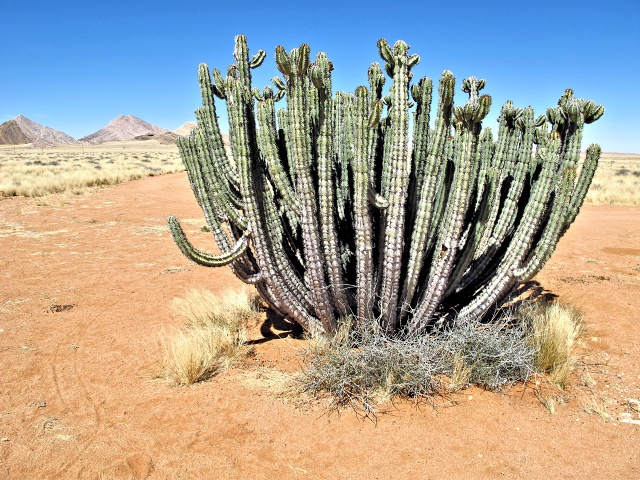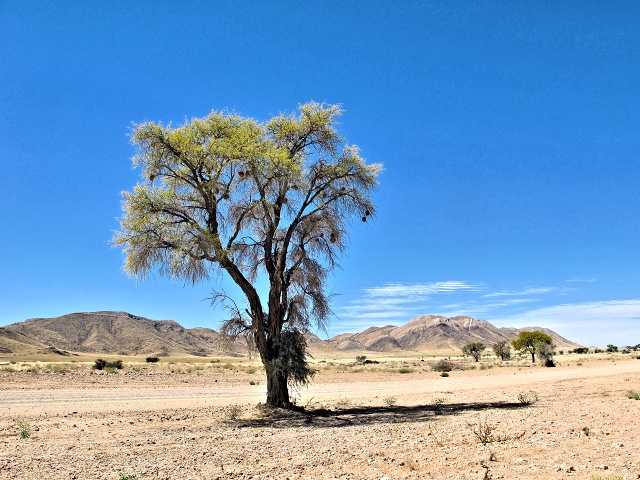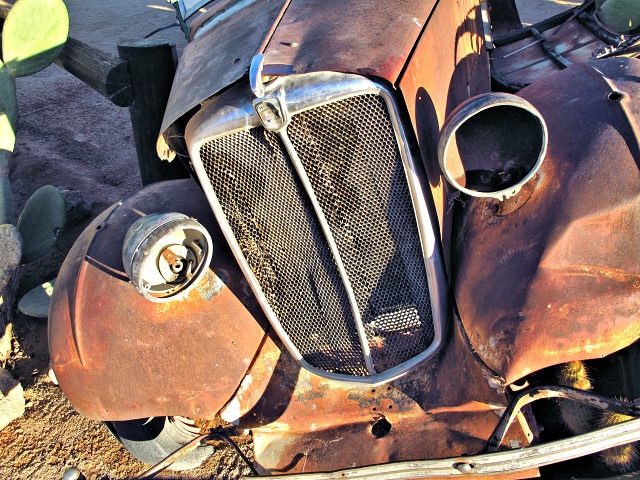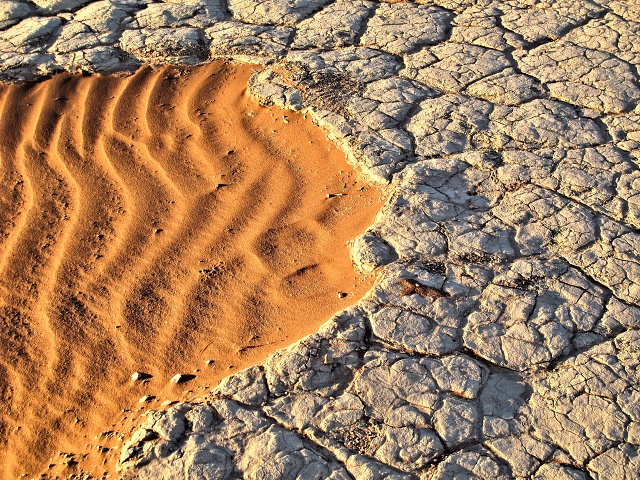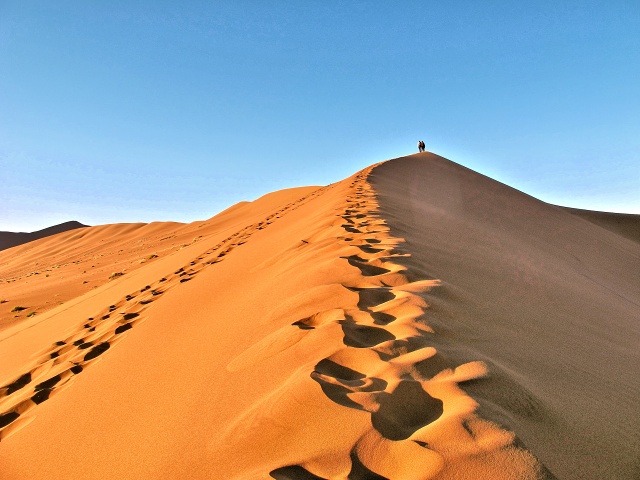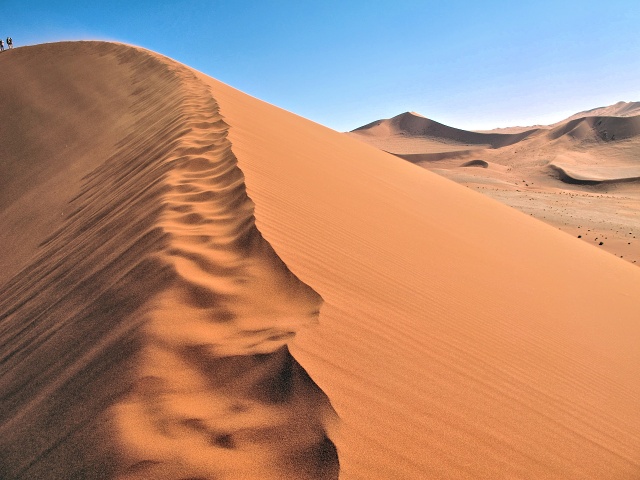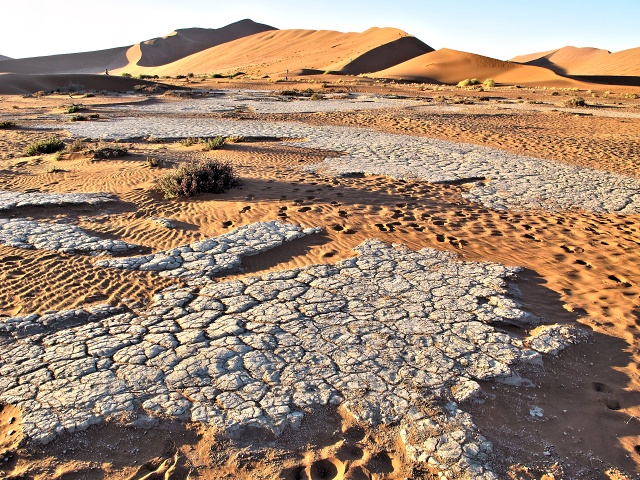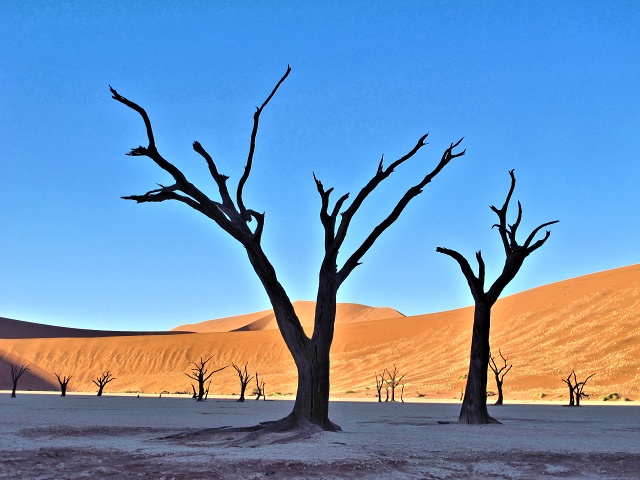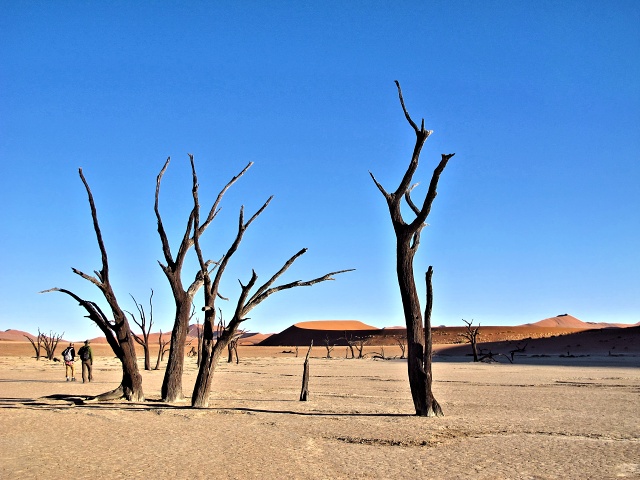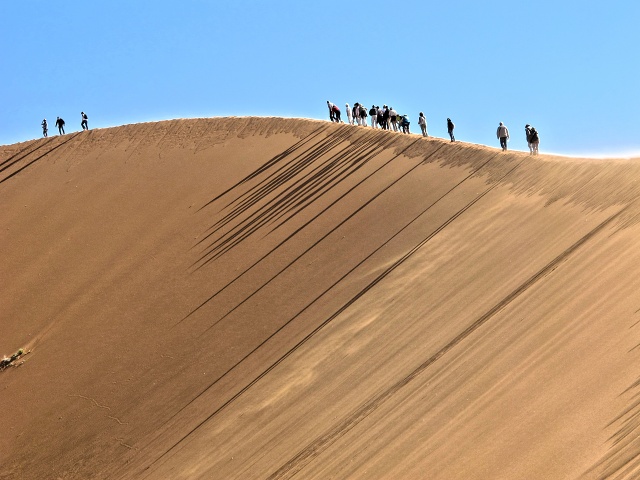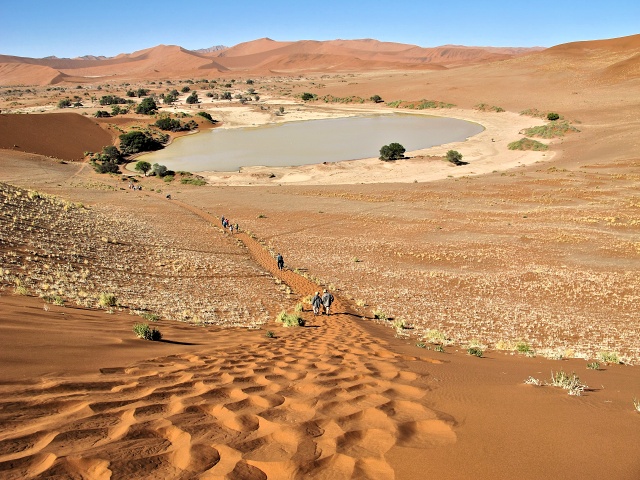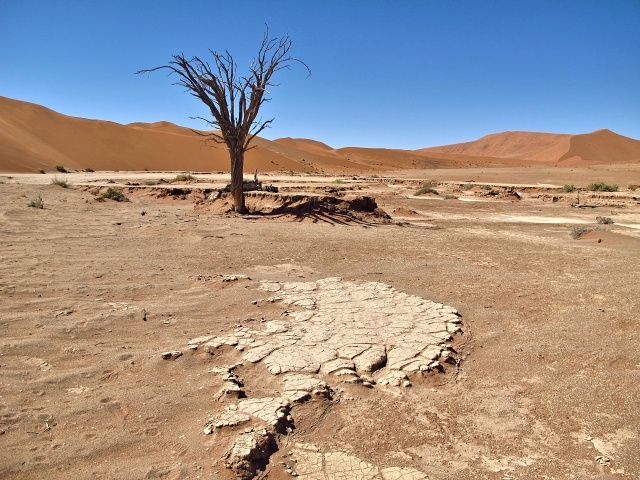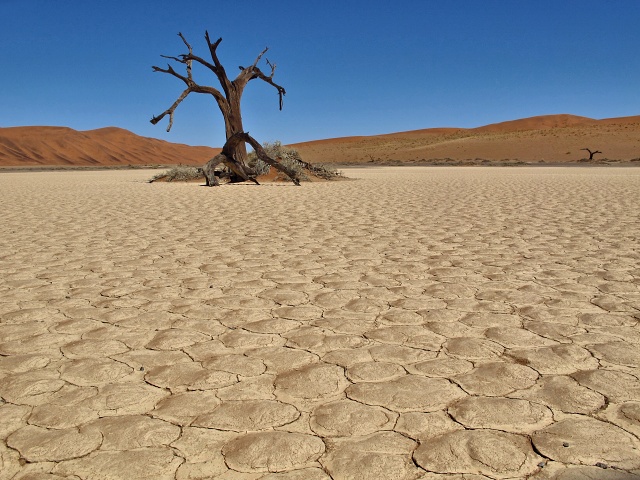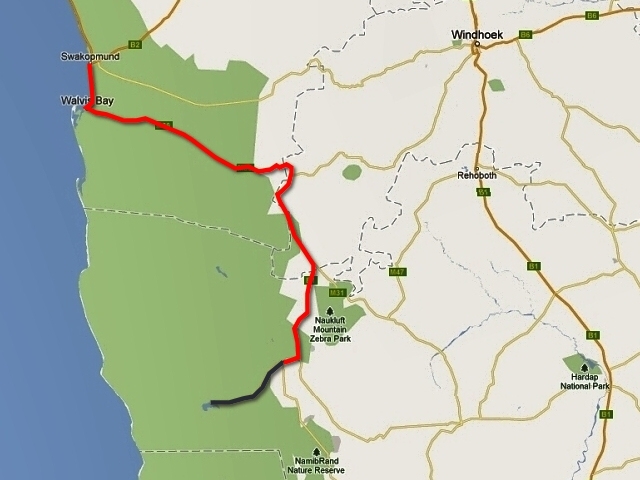| Cycling South Africa |  | |||||
 |
 |
 |
 |
 |
 |
 |
| Nothing compares to the simple pleasure of a bike ride. J.F.Kennedy | ||||||
| Three-month cycling trip, starting in late August 2012 in Windhoek, ending in Cape Town. Author's 9th expedition (New Zealand, Australia, USA, Canada, Alaska, Japan, Mexico, Bolivia, Chile, Argentina). |
|
To the Sossusvlei Dunes
Walvis Bay
Walvis Bay is Namibia’s second biggest city, yet it is a remote village like Lovosice. It is the most important Namibian harbor and therefore trucks are constantly plying from both directions. The suburbs are full of small standardized workers' cabins, of a very good quality under the local conditions. The center is not very different from the suburbs. Blocks of supermarkets dominate, I counted at least five, as well as a number of other stores which were closed on the Saturday afternoon, and several gas stations. There is an up-market quarter at the lagoon, with quite nice villas. I found accommodation in one of them, reducing the rate through bargaining by one-third, to 200 N$ per night, as I was the only guest anyway.
I booked a cruise for the following day at an agency to see the dolphins and sea lions, allegedly with champagne and oysters, so I hoped I would not be seeing them in duplicate. Due to the experience with the accommodation, I quite easily achieved a lower price, it was off-season, and it is a sleepy hollow. The weather was correspondingly dull, clouds, wind, damp and cold. Internal heating with liquor cannot be applied too often when traveling by bike, so I rather put on the softshell. I was quite looking forward to sweating in the desert once more.
Lagoon
Pelicans, Sea Lions, Dolphins, Whales, Champagne and Oysters
The beginning of the voyage was impressive. We were about 500 meters from the port, our Guide-cum-Captain whistled on his fingers and soon pelicans arrived from the port, demanding fish. They got what they demanded, flew away, but came back again at the next whistle. Just like whistling for a dog. We had not even managed to breathe out, when the water rippled and a sea lion toddled up for a visit on the steps at the stern. He lay down on our seats, so we had to stand. Then port wine to warm us up and beer to quench our thirst were served. The Guide answered a few expert questions, e.g. "Why do birds fly in a V- formation?" – "Because the front one is carrying the GPS." And, in similar spirits, the voyage continued. Soon we arrived near a huge colony of sea lions near Pelican Point lighthouse. The water around us was boiling with sea lions performing impressive leaps. I did not know where to look first. Besides the sea lions, there were also jackals on the shore, gnawing on some carrion.
We sailed to view the oyster beds. They were doing very well, thanks to the Benguela current, which is exceptionally rich in plankton. The oysters are commonly harvested after only 9 months. But the beds must be cleaned every month, otherwise they would be overgrown with small shells. Another beer and something else from the vast supplies on board and then the dolphins arrived, swimming close to the sides of the boat. The best place for their observation was in the bow, where one had to crawl on the 10-cm wide edge of the boat to see them. All the while the boat was going at full speed ahead and the lifejackets were strategically forgotten under one of the seats. Then one of the boats announced a whale, and so all the boats raced to the spot of the sighting. We got there in time to see two specimens. But it was very brief. The whale emerged in one spot and we had just a few seconds to see it, before it dived under the water again.
Just a perfect trip, a witty guide, a day filled with experiences and, if I had not spared myself, it would also have been filled with alcohol. In conclusion, we had a light lunch at sea accompanied by champagne and crowned with a dish of local oysters. These are eaten raw and probably alive. The Guide opened them and cut the flesh out of the shells. They are eaten with pepper and lemon. In order to savor the taste, one must chew them a little before swallowing. I had half a dozen and they were delicious. And my digestive tract did not suffer any harm. As we approached the harbor, the pelicans flew towards us, responding to the whistle and accompanying us for the last kilometer of the voyage.
Like a Fat Duck
Nevertheless, the beginning was fine. The first 20 km of road leading to the Airport was paved and there were still no hills. But then came a difficult turning point, on to a dusty road with lots of corrugations, often buried in sand for long sections. I began gradually, but steadily, to climb up to the plateau which forms a substantial part of the Namibian territory. I had no choice but to work really hard in the heat. Of course I was pleased by the reaction of passing motorists. The vast majority of them waved, honked and some would even stop with a request to take a photo and to offer me water, food and moral support. Flocks of ostriches grazed around me, occasionally a pack of jackals showed up, but otherwise there was not much excitement. The exception was the Vogelfederberg rock formation, in whose vicinity the map indicated the first of the campsites to be situated. However, access to it was not marked and it was reached via a road for which special permission was required.
When Promises are Kept
In the Wilds
In the morning, I feasted my eyes for a few kilometers. I passed a turn-off to the second campground which was as unusable as the previous one, and after about 10 km saw a good place to sleep. The roadside rest place, hidden behind a slight hill, would have been an ideal option, with table and benches for comfortable cooking and dining. The road then deteriorated considerably, its sand-covered surface forcing me to push the bike a few times even on the flat. The continuous short descents and climbs were eating up a lot of my strength. The passes through the Kuiseb and Gaub Canyons were beautiful, albeit physically demanding. And I felt the lack of food weakening me significantly.
However, I still headed steadily on to Rostock Ritz Lodge, where there was also meant to be a campsite. But my main concern was food and beer. As I was approaching Rostock Ritz, my only desire was that it was not located far from the road. My wish was not granted, the camp was 7 km on a road which was almost impassable by bike. Fortunately, the entrance road to the campsite appeared after 1 km. Due to the failing light, I could not obey the instruction that those interested in camping were to register at the Lodge, 6 km away. I pushed the bike on the road buried in sand for a further 2 km and reached the camp. Not a sign of life anywhere, but everything was functioning. The hot water shower got me back on my feet. Removing the sweaty shirts from the body unwashed for two days was truly a physical relief.
Solitaire
Dinner was great. Loyal to my principles, I ate only meat and vegetables. Oryx steak, Zebra goulash. Well, I stuffed my belly for two days in advance. This is what I really enjoy about travel. One day, it is oysters with champagne and sleeping in a cozy room with every facility, the next day, sleeping in a ditch, the following night in a mysterious, deserted campsite and afterwards dining on delicacies in an elegant dining room.
Sesriem, or Tourist Village
Of course, the campsite was also rotten. There were about 30 tent sites, each of them could hold at least six cars with tents. These were the reserved sites. Those who did not have a reservation, were confined to a space where there was nothing – no tables, water or electricity. Most people had come without reservations and so were camping quite uncomfortably. But they all had everything in their cars, took out tables and chairs, had their own water tanks and a few clever guys even had their own generators. For me, however, it was like camping in a ditch beside the road. At least I could get some water. Not enough toilets, showers with lukewarm water and without shower heads. A classic example of how the State is ineffective in such cases.
Sossusvlei - Namibia
The dunes commonly reach a height of 200 meters and are among the highest in the world. The record-holder is the Big Daddy dune which has an impressive height of around 320 meters (the height varies over time). The dunes are colored from pink to orange. The age of the dunes can be assessed by their color. The redder the dune, the older it is.
At first glance, the whole area seems unsuitable for vegetation and animals due to the lack of water. However, the area is irrigated by underground and temporary rivers that flood the valley during the season. The daily ration of humidity is ensured by regular morning fogs caused by the damp air on the Atlantic coast. This enables the survival of not only small mammals and snakes, but even ostriches and antelope such as the Eland and Springbok.
Due to frequent strong winds, the dunes have falcated edges and therefore they are called star dunes. And because the dunes are essentially unstable, they moved into the original valley, or rather into the calcified basin and split into several smaller valleys. The best known are three of these– Deadvlei which is famous for dozens of dead trees up to 900 years old, scorched black by the sun. Although they are definitely dead, the local climate has also fossilized them, so that the trees will endure for centuries in their unchanged condition.
Another valley is the aforementioned Sossusvlei. Water in the pan is a unique event and two flamingos were even parading in it, provoking most visitors to photographic efforts. However, in Walvis Bay there are hundreds and thousands of them just along the coast. The area was previously inhabited by Bushmen, but in 1950 they grew tired and moved away. Since then, there have only been animals, and especially tourists.
The two valleys mentioned above usually tire tourists and so they skip the visit to the last one – Hidden Vlei. It is a 4-km walk (there and back) from the parking lot and in the local heat it is quite tedious. But you correctly anticipate that I did not omit it. And I was thrilled, not a soul anywhere, I had the vlei all to myself, leaving my sole footprints on the dunes.
Sossusvlei is located approximately 65 km from Sesriem. It is even connected by a paved road. The road ends with a parking area for 2WD cars. Those with 4X4s can drive on further to the 5-km distant Deadvlei. The track is covered in 30 cm of sand, so normal cars have no chance of getting there. An NWR shuttle operates for passengers of those cars at the unbelievably high price of 150 N$. I had paid for my transport from Sesriem and so this nifty feature was already included in the price.
Solving Problems
The second problem was worse – the MSR Whisper Lite International gasoline stove was malfunctioning. Boiling 1.5 liters of water took 20 minutes and this was really unacceptable. I did not have the operating instructions with me, but I had to repair it somehow. I disassembled what I could, but was none the wiser. I even replaced the nozzle (the cooker has two types of fuel jets – for gas and kerosene, etc.), but it did not help. Because the cooker was smoking considerably when being lit, I was all covered in soot and each manipulation with it meant soiling the hands. Eventually I located the defect. The pipe leading from the cylinder to the burner was clogged. The problem was apparently caused by the gas purchased in Khorixas. The cooker had worked perfectly with the cleaning gas. I poured out the gas, bought some new gas, but still it was not perfect and I had to disassemble the cooker and blow through the tube every day. I also wondered whether the gas was not corroding the bottle in which I carried the reserve for refilling, but it did not seem to be. I would see if it improved.
 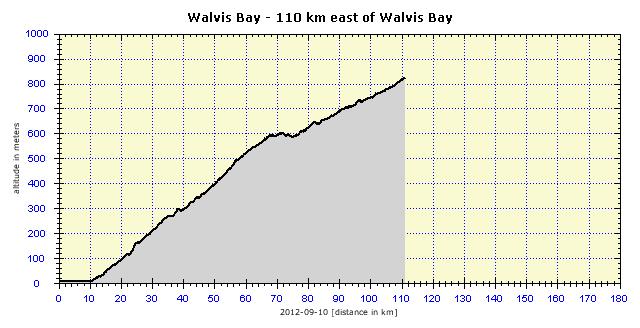 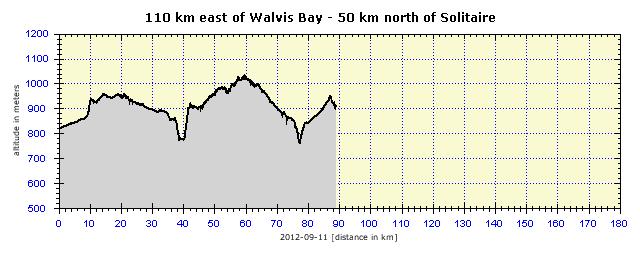 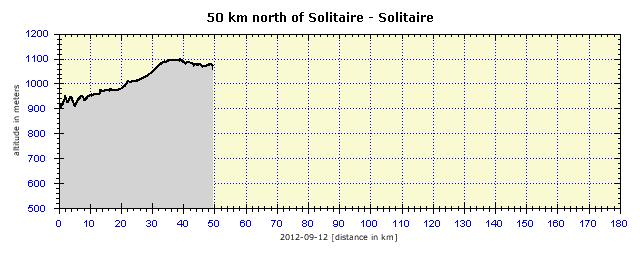  |

